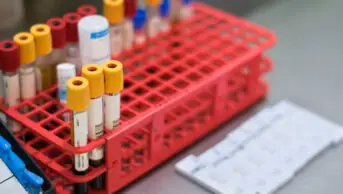In 2012, a Tweet by motivational speaker Simon Sinek said that when people are emotionally invested, they’ll want to contribute. The obvious point I take from this is that when people care about something, such as their workplace, they will want to give back to it, perhaps over and above their everyday role. I wonder if this logically follows — organisations that understand and empathise with their employees, will in turn invest in their workforce, and see the return.
It is with these thoughts in mind that I am focusing this month on pharmacist-specific papers. Perhaps shedding light on the stresses, hopes and expectations of pharmacists will contribute in some small way toward easing employer–employee relations, working to improve patient care in the broader terms.
The first paper, published in the International Journal of Pharmacy Practice on 4 February 2023, examines the “stress, satisfaction, and fulfilment of early career pharmacists”. Conducted in Malaysia, the authors reason that internationally, there has been a high incidence of stress and burnout among early career pharmacists, attributed in part to the COVID-19 pandemic, but otherwise poorly understood, justifying the need for their work. They set out to not only look at factors impacting stress and satisfaction, but also what might improve satisfaction and fulfilment, thus promising a solution-focused approach beyond simply unearthing the problems. Using an online questionnaire with eight open-ended questions, and a sample of only 120 participants (87.5% of whom were female), this is undoubtedly a small-scale study. Nonetheless, the findings make for interesting reading. For example, they found that support and space in pharmacists’ personal and professional life contributed to both their overall sense of satisfaction and fulfilment. The paper also documents a range of stressors and barriers to satisfaction and fulfilments, including poor career prospects, which impacted on both the personal and professional lives of the participants. The solution, the authors reason, based on their evidence, is to eliminate job insecurity, establish clear career paths, improve the work environment and invest in developing early-career pharmacists’ skills. I suspect few would argue with these recommendations.

The next paper I read, published in the International Journal of Pharmacy Practice on 16 March 2023, was a study conducted in Jordan, which examined community pharmacists’ confidence to provide services and advice on self-medication to women during pregnancy and breastfeeding. The authors explain that, in Jordan, most medicines are available from community pharmacies without a prescription, giving pharmacists working in these settings a high level of responsibility to provide safe and accurate medicines and advice to patients seeking their care. Similar to the study described above, the authors used the online survey method, receiving 340 responses, against their own sample size calculation, which had indicated a sample of 360 in advance of the work. This study too had a majority response from participants who were female (89%). Respondents lacked confidence to give advice relating to pregnancy and breastfeeding, only ‘agreeing’ to various questions on this topic around 50% of the time. No standalone small study is perfect, and the authors of this study too acknowledge the many methodological weaknesses of their work. Nonetheless, as others recognise, this study highlights that much improvement is needed in terms of providing safe and effective medication-related advice to women. The paper recommends the implementation of continuing education programmes to help improve community pharmacists’ performance in this area and, as an educationalist, I wonder if pharmacy schools globally might also learn from these findings. In the meantime, there are of course some excellent resources available for pharmacists who might want to improve their knowledge of medicines-use in pregnancy.
The final paper, published in the International Journal of Pharmacy Practice on 4 February 2023, examines pharmacists’ intentions to migrate out of Kerala, India, to countries abroad. It seems much is already known about the migration of healthcare professionals from India to ‘developed’ countries. This paper hones in on pharmacists and uses a mixed-method approach, meaning a general survey was first sent to pharmacists (n=256), before inviting a select few (n=15) with high intentions to migrate to participate in in-depth interviews. There is much material to contend with here — survey development and validation, lack of an obvious a priori hypothesis, the multi-stage sampling method, as well as some of the reporting of the quantitative results. Nonetheless, taken together with the qualitative analysis, the paper appears to unearth what is at the heart of pharmacists’ intentions to migrate; low income, poor working conditions, lack of respect and recognition for pharmacists, as well as professional conflict with retail pharmacies operated by non-pharmacists, and indeed with doctors within a hospital setting. Social connections and family support appear to bolster these intentions to migrate. With just under half of the pharmacists surveyed indicating a high intention to migrate, the authors recommend equitable wages, strict enforcement of regulations and efforts to improve public perception of pharmacists as ways of addressing their needs and potentially averting future pharmacist shortages.
What these disparate studies communicate to me is an urgency to address the needs of pharmacists to help make sure they can operate safely and happily under increasing pressure, all across the world. With understanding comes empathy. Perhaps employers, educators, and governments can learn from this.
Parastou Donyai is chief scientist at the Royal Pharmaceutical Society


